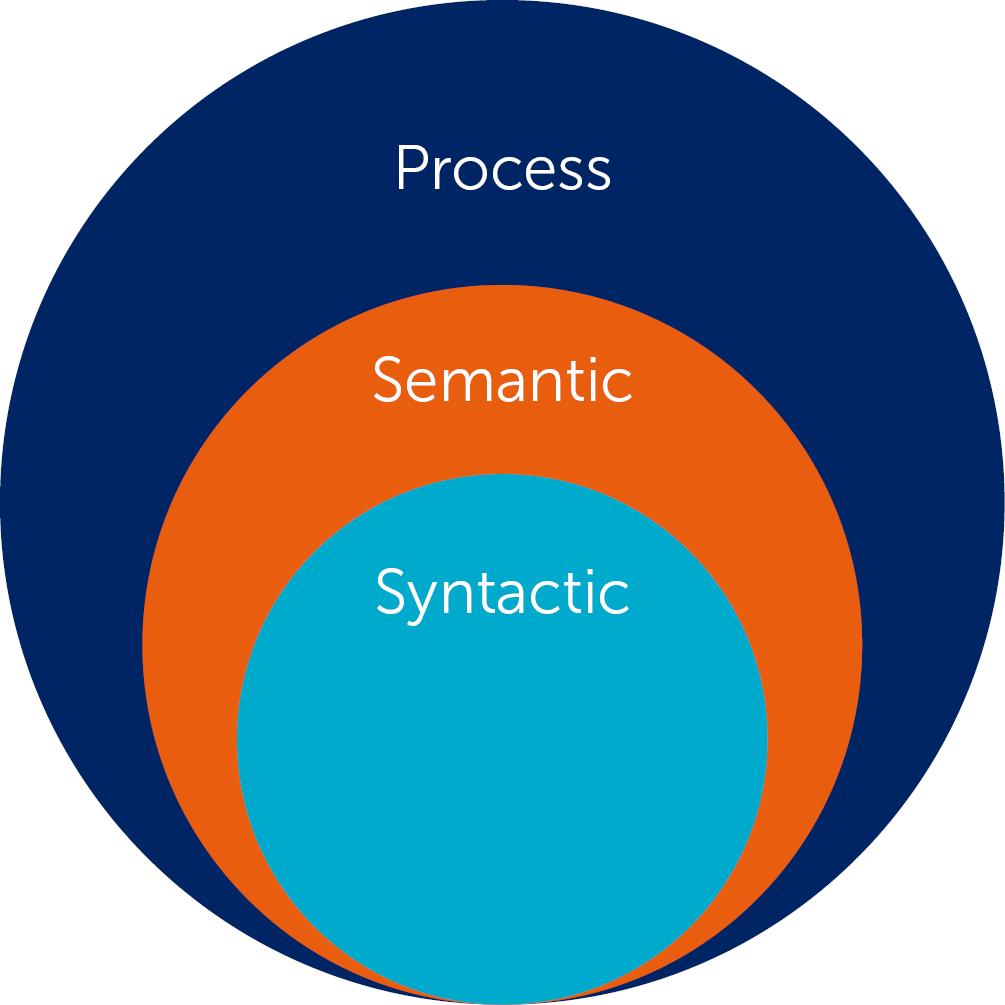Timely adoption of interoperability standards will help healthcare organizations increase patient’s satisfaction, ensure greater revenue and provide better patient care. Read how to achieve greater technology interoperability through related systems & standards and effective planning.
Care Anywhere
Over the last decade, the importance of Interoperability in Healthcare has been steadily growing, until it finally b ecame one of the pillars of the Meaningful use certification criteria. But why is it so important and how can organizations achieve it? In today's dynamic environment, people frequently travel all around the world, and the concept of Care anywhere, any time, any place, has become more and more critical and interoperability is an essential part of it.
Levels of Health Information Technology Interoperability
While HIMSS defines three levels of health information technology interoperability (Foundational; Structural; and Semantic), the levels could also be viewed in a broader way:
- Syntactic (covering what HIMMS defined as Foundational and Structural levels)
- Semantic
- Process (cross-domain)
It's important that each level include the previous one as shown in the picture below:

The Syntactic Level is based on an agreement on how to parse the content exchanged. Computer usage requires a mapping between the terminologies used by the participants. Building interfaces between systems using industry standards like HL7 and ASC X.12 allows organizations to achieve this level.
The Semantic Level requires participants to use the same reference terminologies and mapping to a reference information model. Adopting Terminology standards like ICD-10, SNOMED CT and LOINC will ensure moving up the Interoperability “ladder”.
The Process Level includes shared process definitions and inter-participant workflow orchestration. Although no examples of process interoperability currently exist, within the healthcare domain a number of acad emic institutions have postulated that it should be possible to build this level upon the semantic interoperable system.
Related Standards to Achieve Better Interoperability
Some related systems/standards that will help organizations achieve greater interoperability include:
- EMPI (Enterprise Master Patient Index) is a component which allows organizations to generate a unique patient ID in heterogeneous patient management systems. It serves as a basis for a cross-enterprise electronic patient record. EMPI also addresses data integrity and allows organizations to resolve duplicates, overlay and overlaps. As a result, it reduces expenses and increases patient safety.
- XDS is a global industry initiative “Integrating the Healthcare Enterprise” (IHE) specified in the Cross-Enterprise Document Sharing (XDS) integration profile. The idea is to store healthcare documents repositories in a transparent, secure, reliable and persistent way by using a document registry responsible for storing information about the documents. This way, the documents required for patient care are
- The Direct Project establishes standards and documentation to support simple scenarios of pushing data from where it is to where it is needed in a way that will support more sophisticated interoperability in future. The Direct Project specifies a simple, secure, scalable, standards-based way for participants to send authenticated, encrypted health information directly to known and trusted recipients over the Internet.
- HL7 FHIR (Fast Healthcare Interoperable Resource) is a standard uniting the best elements of the previous Health Level 7 standards (namely, V2, V3 and CDA) with advantages of web service technologies. From a technical point of view, it is endowed with the architectural benefits of REST style (as opposed to a widely used Simple Object Access Protocol which in fact has bar ely anything simple to it) providing the ease of incorporated HTTP operations. FHIR consists of modular resources that may be extended, combined or customized to deal with clinical and administrative issues focusing on common use cases. Targeted at the actual feasibility, this standard is a big step in the healthcare interoperability market.
Effective planning of interoperability strategy and timely adoption of the industry standards will help healthcare organizations increase patient’s satisfaction, achieve greater revenue and provide better patient care. To advance interoperability among health information systems enabling free movement of data, more than 40 vendors, avid EHR catalysts, commit to easy and secured consumer access electronic health information, its transparency and implementing related interoperability standards.

